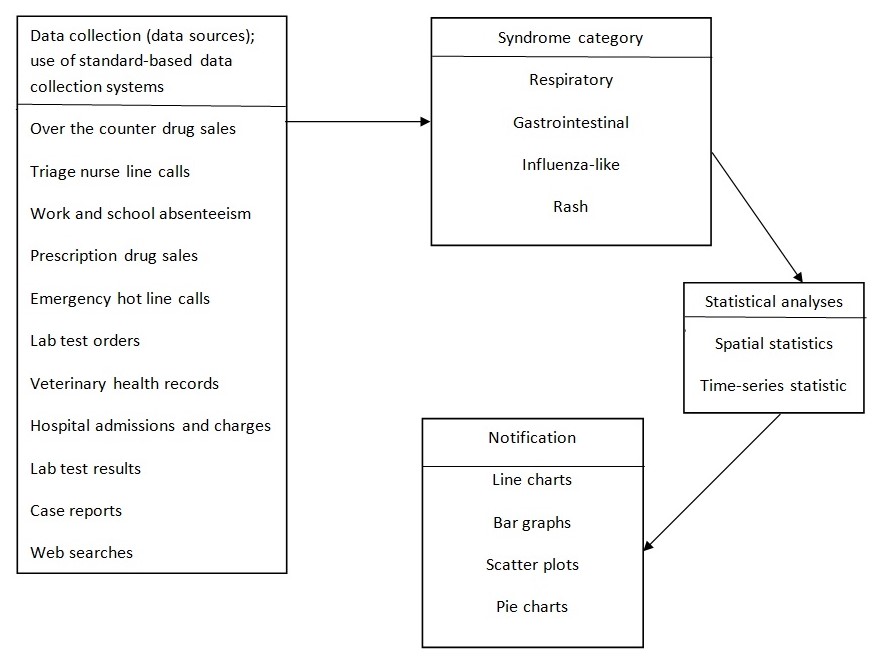Introduction
Electronic disease surveillance systems (EDSS) are essential in the timely detection and reporting of outbreaks (Soto et al., 2008). Although the Centers for Disease Control and Prevention (2011) reports a significant increase in interoperability and integration in the states’ EDSS capacity, the agency acknowledges that numerous problems still exist. Therefore, this coursework analyzes challenges that Maryland and the US government face in implementing EDSS with a view of giving recommendations and an algorithm to mitigate the challenges.
Analysis of Challenges of Disease Surveillance
Different states have unique disease surveillance systems that suit their health data needs. Customization of the surveillance system by states poses a major problem since interoperability is vital in electronic data sharing. Other problems include lack of a standard-based data gathering system, insufficient funds, and lack of algorithms for detecting outbreaks.
Common and Unique Challenges
Though the Centers for Disease Control and Prevention (CDC) has developed NEDSS, its implementation has been partial in a few states, and thus, the national government continues to face the problem of the ongoing development of IT infrastructure, which impedes the integration efforts. The national government also faces the challenge of designing and implementing standard-based systems (United States Government Accountability Office, 2005). This challenge results in poor communication and a delay in the relay of information, which weaken the importance of data and hinder the successful sharing of data among different systems (Council of State and Territorial Epidemiologists, 2013; Jajosky & Groseclose, 2004). Reifman, Gilbert, Parker, and Lam (2004) aver that other technical challenges of disease surveillance systems include the lack of a sensitive and specific algorithm for discovering outbreaks.
Maryland faces problems in its implementation of EDSS, the first being insufficient funds. According to the Centers for Disease Control and Prevention (2011), the limitation of funds is a major challenge that nearly all states encounter. States need funds to facilitate training of surveillance staff in informatics and improve infrastructure (Council of State and Territorial Epidemiologists, 2013). Secondly, Maryland faces a lack of a mechanism to hasten the establishment of standard-based systems for gathering data, because such mechanisms do not exist at both state and local levels (Council of State and Territorial Epidemiologists, 2013). Lack of standardization creates inconsistencies, such as data coding, double entries, and differing variables (Jennings et al., 2009).
Recommendations
- The government should increase funds to states to enable the training of surveillance staff in informatics, improve IT infrastructure, and facilitate the full implementation of NEDSS.
- Since different states employ different EDSS, the government should encourage states to embrace uniformity in data handling by adopting NEDSS, instead of EDSSs that are custom-made to meet the individual states’ health information needs.
The national government should develop and implement standard-based data collection systems and ensure adoption by states.
Conclusion
The successful implementation of EDSS needs a comprehensive approach to tackle the challenges. Data analysis algorithms are important in disease surveillance systems’ effectiveness. For the national and Maryland governments to mitigate their EDSS challenges, they should adopt the following algorithm for infectious diseases, such as tuberculosis.

References
Centers for Disease Control and Prevention (2011). State Electronic Disease Surveillance Systems: United States, 2007 and 2010. Morbidity and Mortality Weekly Report, 60(41), 1421-1423.
Council of State and Territorial Epidemiologists (2013). Review of and Recommendation for the National Notifiable Disease Surveillance System: A State and Local Health Department Perspective. Web.
Jajosky, A., & Groseclose, L. (2004). Evaluation of Reporting Timeliness of Public Health Surveillance System for Infectious Diseases. BioMed Central, 4(29), 1-9.
Jennings, M., Stover, A., Bair-Merrit, H., Fitchtenberg, C., Munoz, G., Maziad, R., Ketemepi, J., & Zenilman J. (2008). Identifying Challenges to the Integration
of Computer-Based Surveillance Information Systems in a Large City Health Department: A Case Study. Public Health Reports, 124(2), 39-48.
Reifman, J., Gilbert, G., Parker, M., & Lam, D. (2004). Challenges of Electronic Medical Surveillance Systems. Web.
Soto, G., Araujo-Castillo, V., Neyra, J., Fernandez, M., Leturia, C., Mundaca, C.,… Blazes, L.
(2008). Challenges in Implementation of an electronic Surveillance System in a Resource-Limited Setting: Alerta, in Peru. BMC Proceedings, 2(3), 1-7.
United States Government Accountability Office (2005). Federal Agencies face Challenges in
Implementing Initiatives to Improve Public Health Infrastructure. Web.